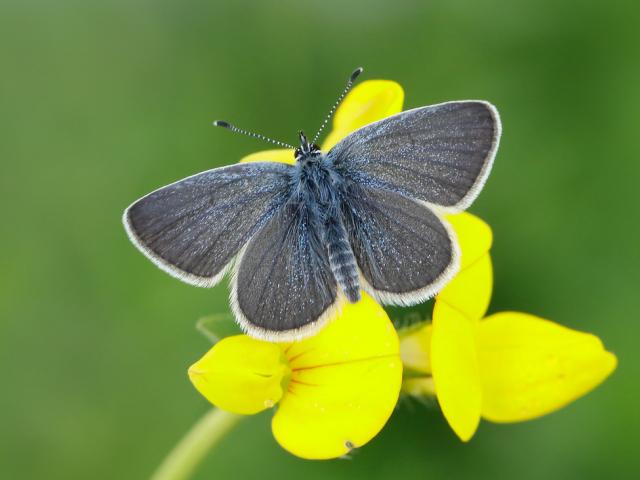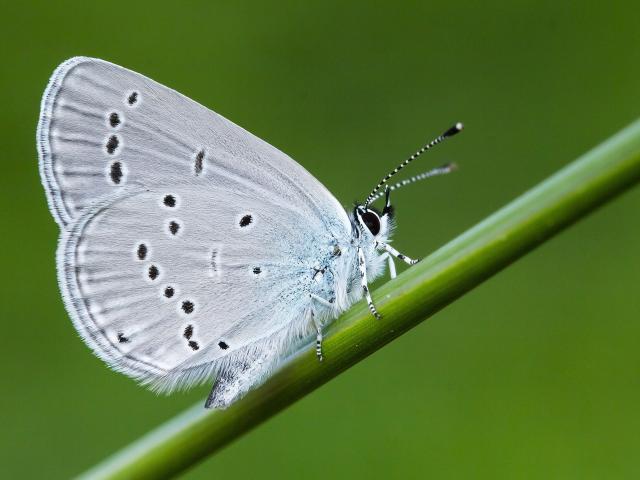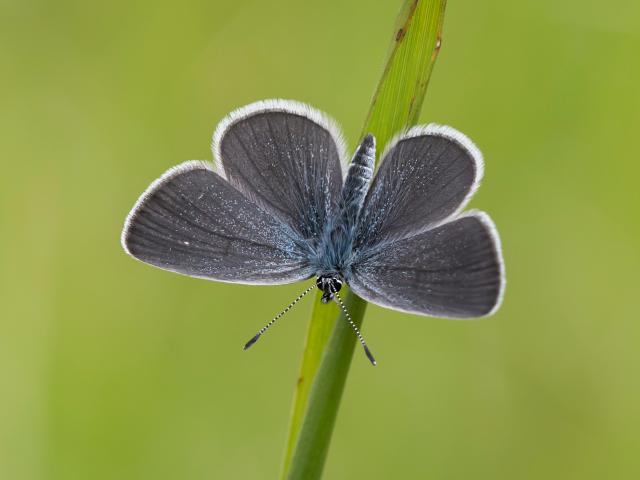

In 2019 we completed a project to help the Small Blue Butterfly on the Surrey Downs. The project has helped to create an extensive network of sites between Guildford and Box Hill, with individual butterflies now more able to move between different areas and sites, enabling the creation of a strong and sustainable metapopulation.
The Small Blue is Britain’s smallest butterfly and is listed as a species of principal importance for biodiversity conservation under Section 41 of the Natural Environment and Rural Communities Act 2006 (previously highlighted as Priority Species under the UK Biodiversity Action Plan).
Since 1979, this lovely little butterfly has suffered a 34% decline across the UK (United Kingdom Butterfly Monitoring Scheme 2018). In Surrey the Small Blue distribution is also declining, with the remaining sites become more isolated and remote. At the start of the 20th century it was described as common, but in Surrey is now found in just 26 locations across the county.
Project Aims
The project focused on establishing a series of habitat stepping-stones to permanently link up the colonies on the North Downs between Guildford and Box Hill (16km, 10 miles).
Key species
Chalk Carpet moth
Lace Border moth
Methods

- Creating bare-ground patches from dense scrub and thick grasses, to providing bare ground to stimulate germination of Kidney Vetch (the foodplant of the Small Blue).
- Seeding and plug planting of Kidney Vetch on sites where the foodplant is absent or is scattered and sparse.
- Creation of butterfly banks on unvegetated sites such as old quarries to provide topographical diversity and different aspects, which can also be seeded or plug planted.
- Recruiting volunteers to help with practical management and monitoring; establishing volunteer community groups at some sites.
- Engaging with local communities across the Surrey North Downs through a programme of public events and promotional activities.
- Organising and running management and monitoring workshops.
Results
We delivered 81 habitat management work parties with volunteers. More than 60 different volunteers contributed 1,191 days of volunteer work. These tasks involved primarily bare ground creation, scrub management, sowing Kidney Vetch seeds, weeding around seedlings, erecting fencing around scrapes as protection form rabbits and livestock.
We have produced a Guide to Habitat Management for the Small Blue to be shared with our partner conservation organisations and other BC Branches.
Over 18.5 hectares of land was managed by the project to favour Small Blues – increasing the bare ground resource available and managing young scrub and invasive species such as Buddleia and Cotoneaster.
Specialist contractors delivered large-scale scrub management, bare-ground creation, ‘wildflower plots’ suitable for cultivation of Kidney Vetch, and fencing exclosures to protect the new plots.
186 bare ground plots were created across the project area, in order to cultivate Kidney Vetch from locally sourced seed. 15 Scrape stewards have volunteered to visit these scrapes a few times each year to weed them, seed them, monitor their progress, create species lists, and report back any issues such as damage to scrapes/ grazing pressure on Kidney Vetch.
There were 8 survey days, including egg searches, habitat assessments and butterfly survey days. Volunteers have been trained up on species ID.
A team of 4 volunteers have been trained and equipped to carry on leading the valuable work of the project by becoming Task Leaders, collaborating with the project partners to lead more volunteer work parties on these sites into the future.
The Surrey and SW London Branch of BC now has a more active volunteer force on the North Downs, equipped with all the tools and equipment they need to continue the legacy of the project.
Partners
The success of the project was made possible by partnership working. We worked with many different organisations and land managers, including Guildford Borough Council, Surrey Wildlife Trust and National Trust, also with the Albury Estate and Albury Organic Vineyard, Rosamund Trust and Denbies Wine Estates.
Project Funders

Butterfly Conservation would like to thank our project funders:-
- Veolia Environmental Trust
- Surrey Community Foundation
- Surrey Hills AONB
- Surrey and SW London Branch of Butterfly Conservation
- Individual donations from members and legacies
- The Lower Mole Project
- West Surrey Natural History Society
- Parish Councils of Shere, Abinger and West Horsley.
Project Acknowledgements
We are grateful to the project funders, to the project partners and to our dedicated volunteers. Without these this important project would not have been possible.
Where to Visit
Contact
Butterfly Conservation’s Surrey and SW London Branch
Regional Conservation Manager: Steve Wheatley @email Twitter: @Steve4Nature

